Building a Meaningful Employee Rewards Program: A Step-by-Step Approach
An employee reward program plays a vital role in motivating teams, reducing turnover, and enhancing workplace culture. Explore how to design effective programs that celebrate achievements, inspire loyalty, and drive better business results.
On this page
- What is an employee rewards program?
- Why does employee rewarding matters?
- Myths around employee reward programs
- Setting the ideological & functional backbone of the employee rewards programs
- How to create employee rewards programs with utmost precision
- Fascinating employee rewards program examples
- How Empuls helps build a rewarding employee experience
- Conclusion
Dr. Ashley Whillans, from the Harvard Business School, puts it quite bluntly: “What really matters in the workplace is helping employees feel valued and appreciated.”
With employee rewards programs tied directly to promoting morale, increasing productivity, and fostering a healthy and positive relationship, it has become imperative for organizations to praise employee accomplishments to reinforce quality performance—ultimately benefiting both the employee and the organization.
A recent survey by Great Place to Work has found that 37% of employees believe employee recognition is a crucial element that motivates them. Moreover, a study conducted by Gallup has found that 34% of the employees feel engaged with the organization.
Meanwhile, 65% of employees haven’t received recognition for their excellent work, leading to discouragement. It goes without saying that when people are not appreciated for their hard work, their inclination to be productive and produce quality work takes a back seat.
Such a dilemma has put companies in a fire-fighting mode, that too on two fronts:
It has put companies in a fire-fighting mode, that too on two fronts:
- First, they want to motivate employees to function at their maximum potential.
- Second, they want to retain the cream of employees.
And in an environment that is marked with avalanche-esque opportunities for skilled and experienced employees, retaining talented human capital is a Herculean task.
Undoubtedly, this is high time to recognize the importance of building meaningful reward programs for employees, and it begins with understanding what exactly effective rewarding truly means.
What is an employee rewards program?
Employee reward programs are formally implemented initiatives within a company that let employees acknowledge their colleagues' achievements and contributions.
These programs can encompass celebrating daily efforts, significant milestones achieved, and even important personal events. So, in colloquial terms, it is a pat on the back (recognition) with a high five (reward). A reward program typically involves a combination of recognition and rewards.
Here, recognition involves acknowledging achievements, big or small, and contributions made by employees. This can be public praise, a mention in a company newsletter, or a peer-to-peer recognition platform.
On the other hand, rewards refer to tangible incentives given to employees for meeting goals, exceeding expectations, or demonstrating desired behaviors. These rewards can be monetary, which may be bonuses, gift cards, or non-monetary like extra time off, or professional development opportunities. If a well-structured employee reward program is run, HR reps can notice the employees with:
- Increased motivation
- Improved performance
- Reduced turnover
- and a sense of community and appreciation within a company.
Let us go through the quantified study of why employee reward and recognition initiatives are needed.
- A Gallup study revealed very engaged Teams that are in the top 20% have recorded 41% less absenteeism and 50% are much less likely to leave their jobs.
- The same study showed that engaged employees are excited about their work and bring a positive attitude every day.
- The report also shows the positive impact is even more dramatic in organizations with a low turnover rate. Highly engaged business units can see a 43% difference in turnover in these businesses.
- 89% HR leaders believe that regularly getting feedback from colleagues and having regular check-ins are important for success.
- According to a Salesforce study, employees who perceive their voices are valued 4.6 times more likely to be empowered to deliver their best work.
Now that we have gotten to understand the significance of creating a successful employee reward program, and how it is interlinked with the psychological being of the employees into retention, and less absenteeism, let us learn how to create an employee reward and recognition program.
Why does employee rewarding matters?
Rewarding employees isn’t just about gifts or bonuses—it’s about recognizing effort, reinforcing positive behaviors, and building emotional loyalty. When employees feel truly appreciated, they stay longer, perform better, and contribute with more heart.
1. Motivation

Close your eyes and remember the schooldays when your parents handed over a note of 100 rs for your good marks. Or teachers called you in front of all the students and told everyone how good your essay was.
The fact that you still remember it speaks about the sentimental and psychological value you have attached to it. The desire in humans to be liked and appreciated is so high that even a neutral reaction at significant achievement can be perceived as a negative one.
Since your employees come from the same human species, they aren’t untouched by this utterly human craving. There are plenty of studies to rationalize it.
A survey asked: "What is the most important thing that your manager or company currently does that would cause you to produce great work?" The resulting answers are in the following image.

Money, freedom, and other concerns fade away, only to let the recognition emerge as a clear and thumping motivator. And as nothing can validate and publicize the employee recognition more joyously and memorably than rewards, rewarding is to a motivation game what fuel is to the engine.
2. Productivity

When employees get rewarded, it gets reflected in their work. Both employee productivity and performance are 14% higher in organizations that actively practice rewards. And unsurprisingly, there is a close connection between employees’ productivity and an organization’s profitability.
According to Bain & Company, the best companies are 40% more productive than the rest and have operating margins 30%-50% higher than their industry peers.
Note that what gets rewarded gets repeated. Almost all employees say that they’re more likely to repeat actions for which they receive rewards. The bottom line is when you motivate inspiring employees to do their best continuously through rewards, productivity skyrockets. This also helps the team to meet employee engagement goals.
3. Satisfaction
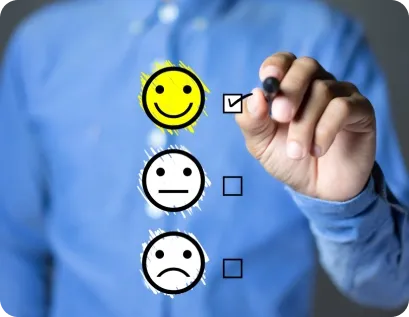
Satisfaction in employees is possible only when they are happy not just with the job but with the workplace as well. In that case, you can do an employee happiness survey to know about your employee's current situation. This factor is critical, as unsatisfied employees are mere clock-watchers, adding dead weight and thereby robbing your organization of creativity, energy, and innovation.
Unsurprisingly, rewarded employees aren’t just satisfied, but they are happy. And it directly means happy customers. Meijer, a U.S. family-owned superstore chain, observed that increasing the frequency of employee rewards from twice a month to twice a week led to a 5% increase in customer satisfaction. The writing on the wall is clear: Take care of your employees. They will take care of your customers.
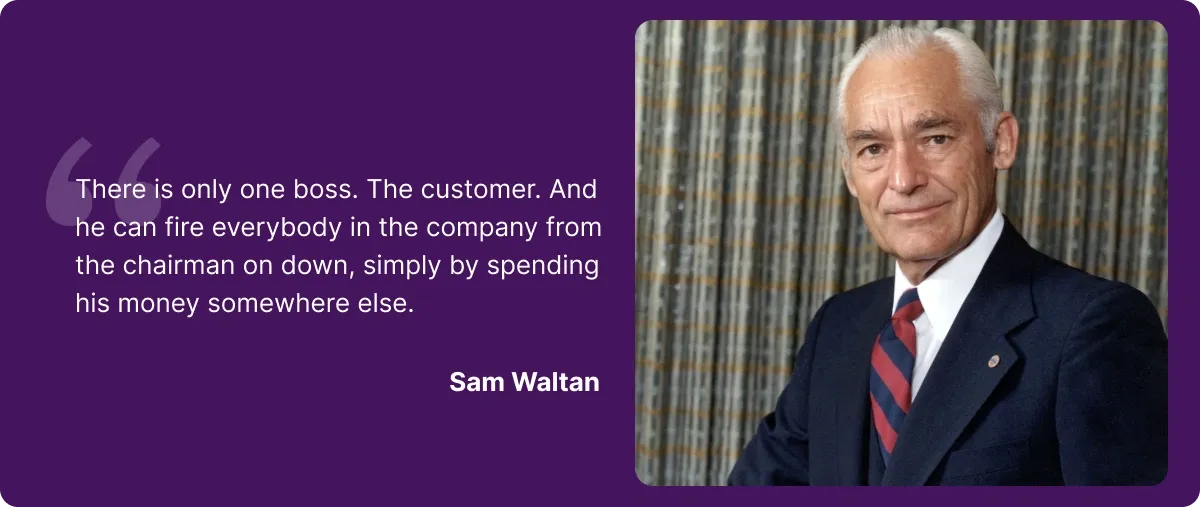
4. Retention

Between posting a job description, screening resumes, interviewing candidates, negotiating packages, and paying referral or signing bonuses, the cost of finding a new employee keeps adding up. You can calculate the baseline cost, but much of the cost associated with turnover is hidden.
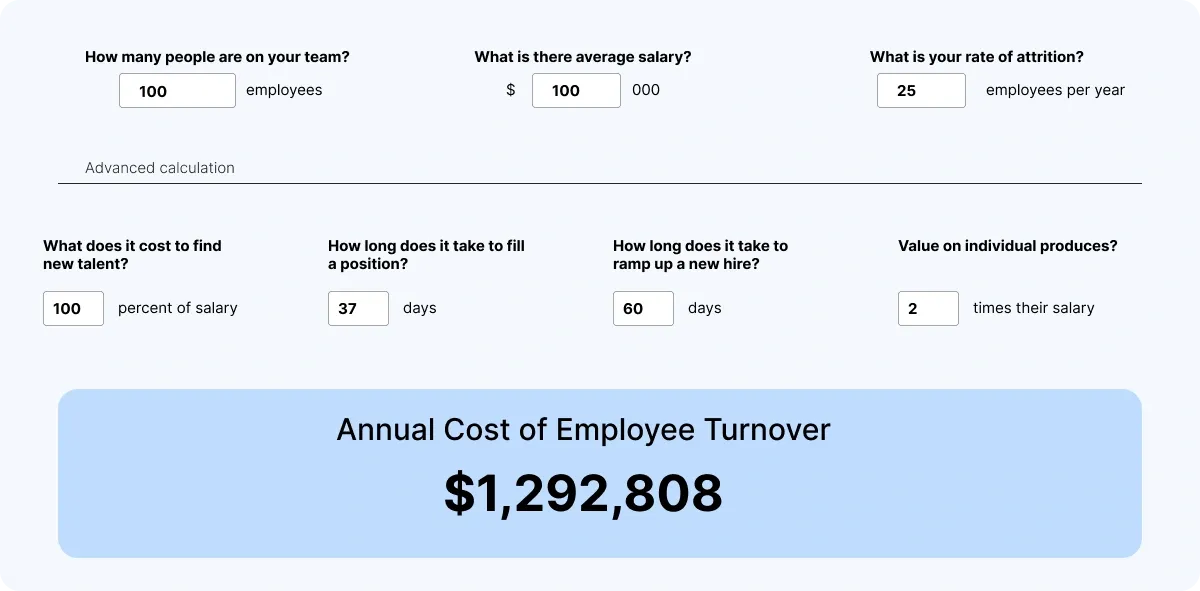
When an employee leaves, the respective team needs to absorb the extra work, creating more unsatisfied, unwilling employees. It hurts the productivity and the culture of an organization. Even if an organization hires a new employee, it needs to spend time and money on training and the right orientation. It’s a guaranteed drop in productivity.
Rewarding has proved an antidote to this all-too-prevalent malice. A study by Bersin & Associates found that organizations with rewards programs had 31% lower voluntary turnover than those with ineffective rewards programs. Clearly, all the companies, from biggies to beginners, want to stand high on the heels of rewards programs’ benefits.
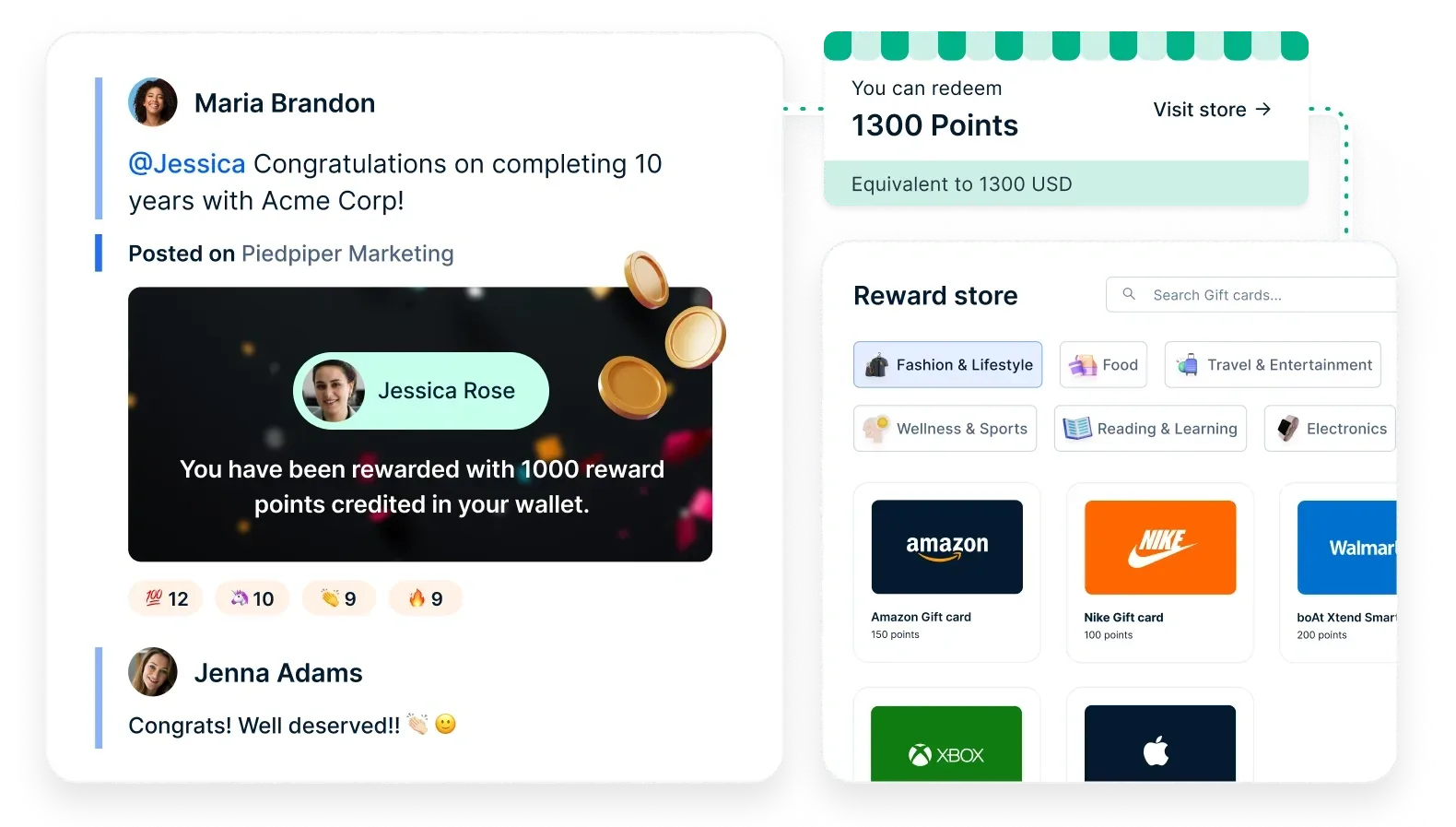
Myths around employee reward programs
Despite being implemented by all the big businesses that have ever been known to humanity, and proven as a silver bullet in retaining employees and increasing productivity, few business leaders are still carrying a deep skepticism about the efficacy of reward programs.
It usually stems from myths, which are abundant. Debunking them is crucial before you can start building a thriving rewards program.
1. Only money can motivate employees

Many business leaders are still buried under the thought that employees only work for money, rendering reward programs a waste of time and money, two of the most significant resources of modern times.
Research shows that leaders cannot be more wrong in their assumptions. A study of employees who voluntarily left a company revealed that 79% left not for more money but because they did not feel appreciated and rewarded.
It has psychological connotations also. Once the basic needs of humans are fulfilled, they aspire for higher things in life, and respect and recognition among colleagues and family usually top the list. A study found that software salespeople were happy to let go of almost $30,000 in bonuses for a gold star on their business card, signaling they'd made "President's Club."
The writing on the wall, then, is clear. Money is something but not everything, unambiguously highlighting the need for rewarding employees when it's due.
2. Rewards programs eat up your time

Since managers and C-suite executives always suffer from a time crunch, they believe that running and managing rewards programs will smother the administration department with time demands. Add to it their time limitations, and they think that they cannot participate in it, forcing rewards programs to go to the back burner.
Modern rewards engines like Plum are more than equipped to arrest these concerns, as they are born with that intent in the first place.
With its numerous API integrations, platform agnosticism, multilingual operability, impressive variety of rewards, and pay-only-for-redeemed rewards feature, it doesn’t just make sending and receiving rewards as simple as sending emails, thereby saving time.
However, by eliminating logistics and waste from the equation, it also eliminates administrative overheads. Consequently, it makes rewarding a low-cost, high-impact action.
3. Rewards programs have an unreliable ROI

One of the major reasons leaders struggle with adapting to rewards programs is that the return on investment (ROI) of these programs cannot be accurately determined.
However, there is no shortage of studies emphasizing the importance of rewards and recognition in fostering a positive atmosphere among employees and translating it into bottom-line benefits for businesses.
One study has shown that a simple expression of thanks by someone in authority can lead people to be 50% more productive.
Furthermore, Gallup's report suggests that engaged teams experience a 40% decrease in voluntary turnover. These statistics demonstrate that the return on investment of recognition is more predictable than leaders often assume.
The truth is, the ROI of rewarding may not be an instantaneous thing. The culture of rewards takes time to flourish in an organizational setting. But when it flowers completely, it has high seismic effects on employee morale, productivity, and retention.
4. Reward is an IOU
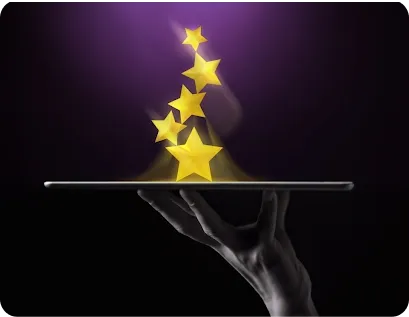
Though rewards can up the bottom line like never before, that’s not the sole purpose of rewarding your employees. It should not be viewed solely as an IOU.
Psychologist Paul White has explained in his popular book on rewards that when employees believe management uses recognition solely as a tool to increase productivity and profits, it fosters distrust. Consequently, shallow words of praise are exchanged as a token of gesture, making rewards look generic and fake. Naturally, it undermines the entire genesis of the program.
The bottom line is that leaders will encash the tangible benefits of rewards if employees believe that praise is genuine and sincere.
Debunking these myths is crucial, for only those who genuinely believe in the power of rewards can germinate a well-planned and foolproof reward program. Once we have believers on board, we can proceed to the next stage.
Setting the ideological & functional backbone of the employee rewards programs
Every great strategy begins with a strong foundation - and rewards programs don’t stray too far from it. Before committing to anything, you must understand the basics of rewarding:
What to reward, whom to reward, and what are the essential characteristics of rewards. Broadly, it falls into four categories -
1. Creating a case for rewards

First, establish a business case for an employee reward program, and ensure it aligns with your desired business outcomes. List out how rewarding employees contribute to business objectives. Convince your leadership that the benefits outweigh the costs.
Let your leadership understand the hidden costs and logistics of manual programs. Going to stores every time to buy gift cards for your team of five and handwriting notes for each person might seem relatively simple and manageable at first.
However, as your team grows exponentially, these manual programs become unwieldy, requiring a whole new level of planning, oversight, and consistency. Fortunately, rewards and recognition platforms can integrate with existing tools, automate rewards fulfillment, and manage rewards efficiently.
2. Build a team of enthusiasts

Once you receive approval from management, you must build a team to support your rewards program.
Pick people who will help conceptualize, promote, communicate, implement, and reinforce your organization’s new reward program. They must tick the following checkboxes of characteristics:
- Highly interested in the program
- Belief in the program benefits
- Know rewards know-how
- Ability to prioritize and tweak the program as per the need
- Proven passionate task masters
3. Understand the characteristics of effective rewards

Before moving towards any rewards program, it’s necessary for everyone involved to understand the basic characteristics of effective rewards:
- Timely: Rewards are truly effective only when given promptly. Note that the association between contributions and rewards tends to weaken over time. Therefore, the aim should be to provide rewards as soon as possible when the reason is there.
- Frequent: It’s a mistake to wait for the most significant and grandest achievements to reward employees. The truth is they are contributing daily and failing to acknowledge it regularly makes them feel undervalued in a company. Note that 71% of highly engaged employees work in organizations that recognize employees at least once per month.
- Specific: Rewards should be exact, as they help employees understand which of their actions directly contributed to their team’s goal. Additionally, specific rewards involve acknowledging the details and context of tasks, rather than merely offering a cold and routine “thanks.” Ultimately, it doesn’t carry the risk of coming across as insincere or unclear.
- Visible: Private recognition is great, but publicly rewarding an employee does wonders. Since everyone in the organization knows that your hard work is appreciated, it magnifies the impact of that appreciation. It instills a sense of pride and accomplishment among employees by earning respect from their peers. It’s, then, hardly a surprise that public rewarding via an award or a certificate topped the preference list of employees in the Gallup workplace survey.
- Value-based: Since it’s an article of faith that your employees work towards a common vision and values, rewarding your employees for reinforcing those values should find a deep root in your organization. If being humane is the guiding principle of your customer service, rewarding an employee who has gone the extra mile in that direction should be a deserving candidate in your rewards program, and not merely the one who has handled more customer queries.
In short, when you're rewarding your employees, keep in mind PEP, the acronym, to ace the activity perfectly.
- Personal - Rewards should highlight your employees’ unique character, personality, or skills. Non-personal rewards are easily forgotten.
- Earned - Rewards should be based on merit. Personalized rewards shouldn’t necessarily be for fulfilling daily tasks. Any employee who goes beyond designated duties should be rewarded.
- Process - Ask yourself what the deserving employee did differently in the process. What was his unique contribution? What knowledge, skill, or talent did he apply?
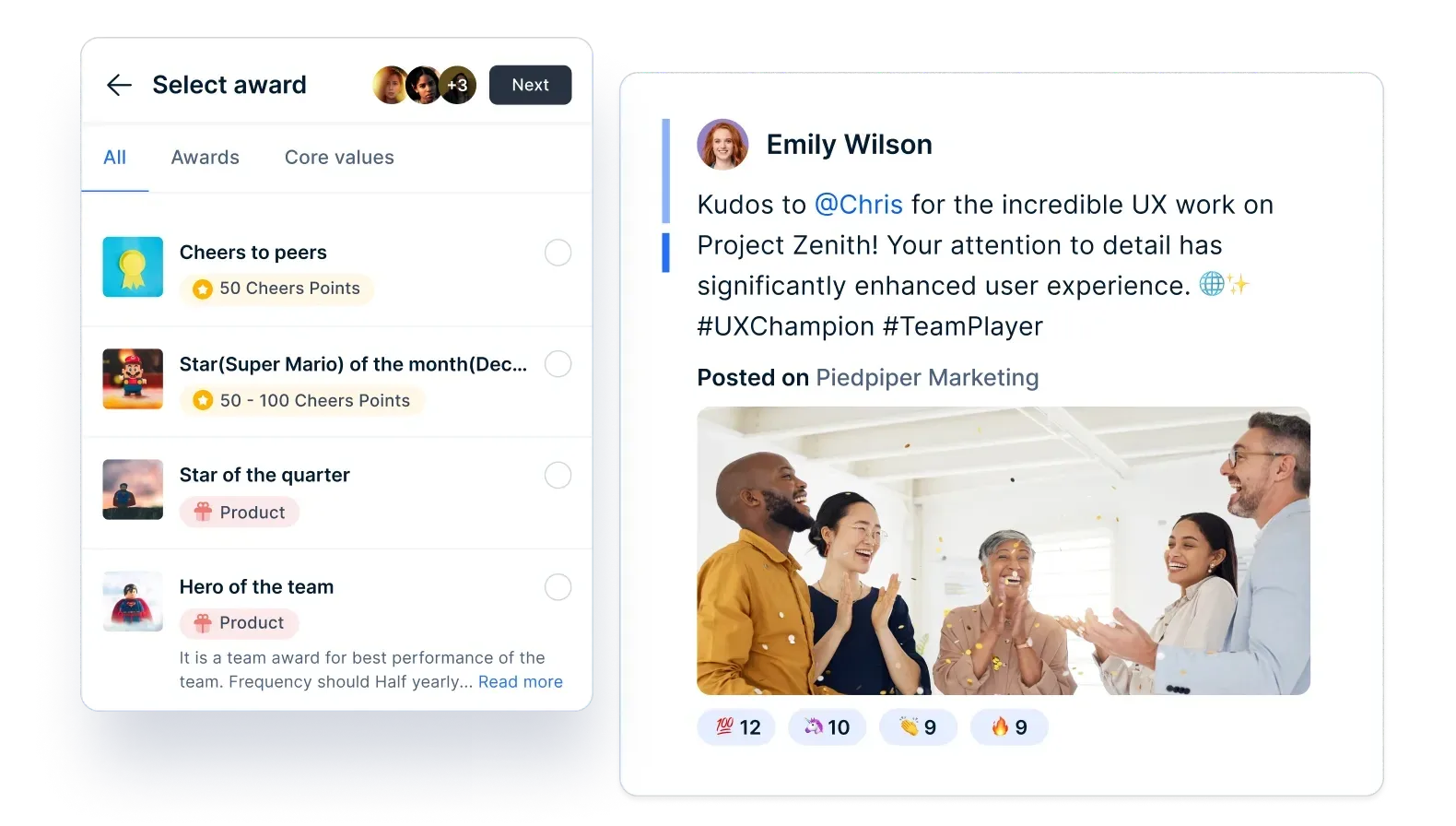
Build a Culture That Inspires Action
A motivated workforce isn’t just productive—it’s unstoppable. Empuls helps you create a culture of appreciation, connection, and motivation with recognition, rewards, and workplace engagement tools.
How to create employee rewards programs with utmost precision
Once you have fenced the foundations of the reward program, the natural progression is getting into the actual implementation.
1. Setting the right goals
Implementation should begin with uncluttered clarity about the purpose for you wanting to reward your employees. In short, outline the goals as clearly as possible in a manner that can be understood by leadership, management, and program users.
It holds the key to the success of your rewards program, as it determines the shape and direction it will take throughout the course.
Ensure that your goals align with your mission and vision. Which business drivers is your program trying to impact? (employee engagement, retention, alignment, performance, values/behavior-based leadership, etc.)
Empuls makes this easier by offering goal-aligned rewards and recognition programs that are built around key business outcomes like engagement, culture, and retention.
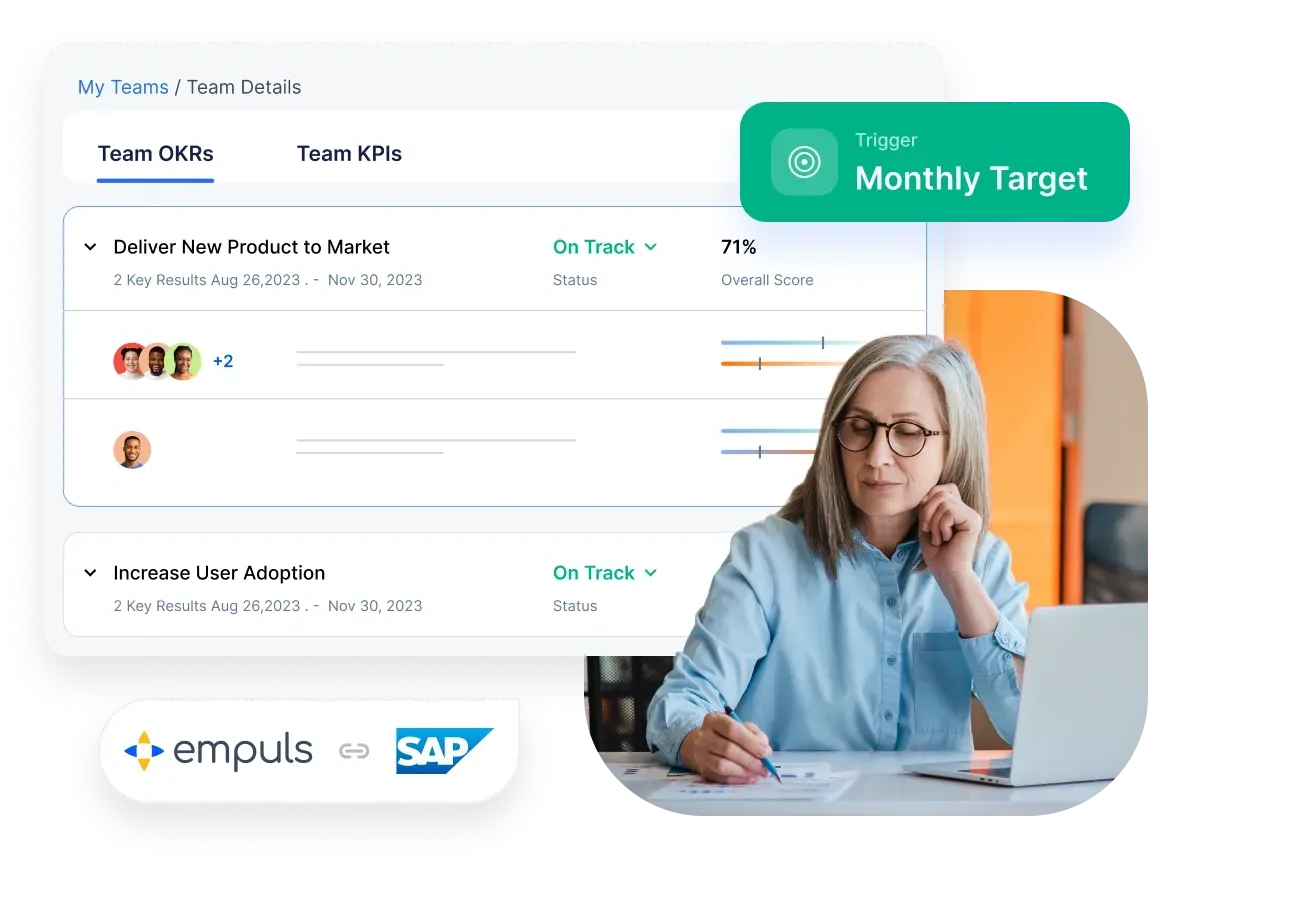
To help you out in zeroing on the right goals, we have listed must-think goals for your program.
- To improve employee engagement.
- To create and instill a culture of recognition.
- To consolidate all recognition programs into one overall focused strategy.
- To align employees with your mission, goals and values.
- To recognise and reinforce desired behaviours.
- To recognise and drive desired performance results.
- To motivate individual and team performance, to positively impact employee performance.
2. Translate your goals into meaningful objectives
You should know at what point you can call your reward program successful. The only way to determine it is to establish measures and targets (with target dates) for each objective and differentiate between qualitative and quantitative measures.
You can design a program ‘scorecard’ with clear measures to determine the success of your program at any time.
Here is how you can correlate your goals with objectives.
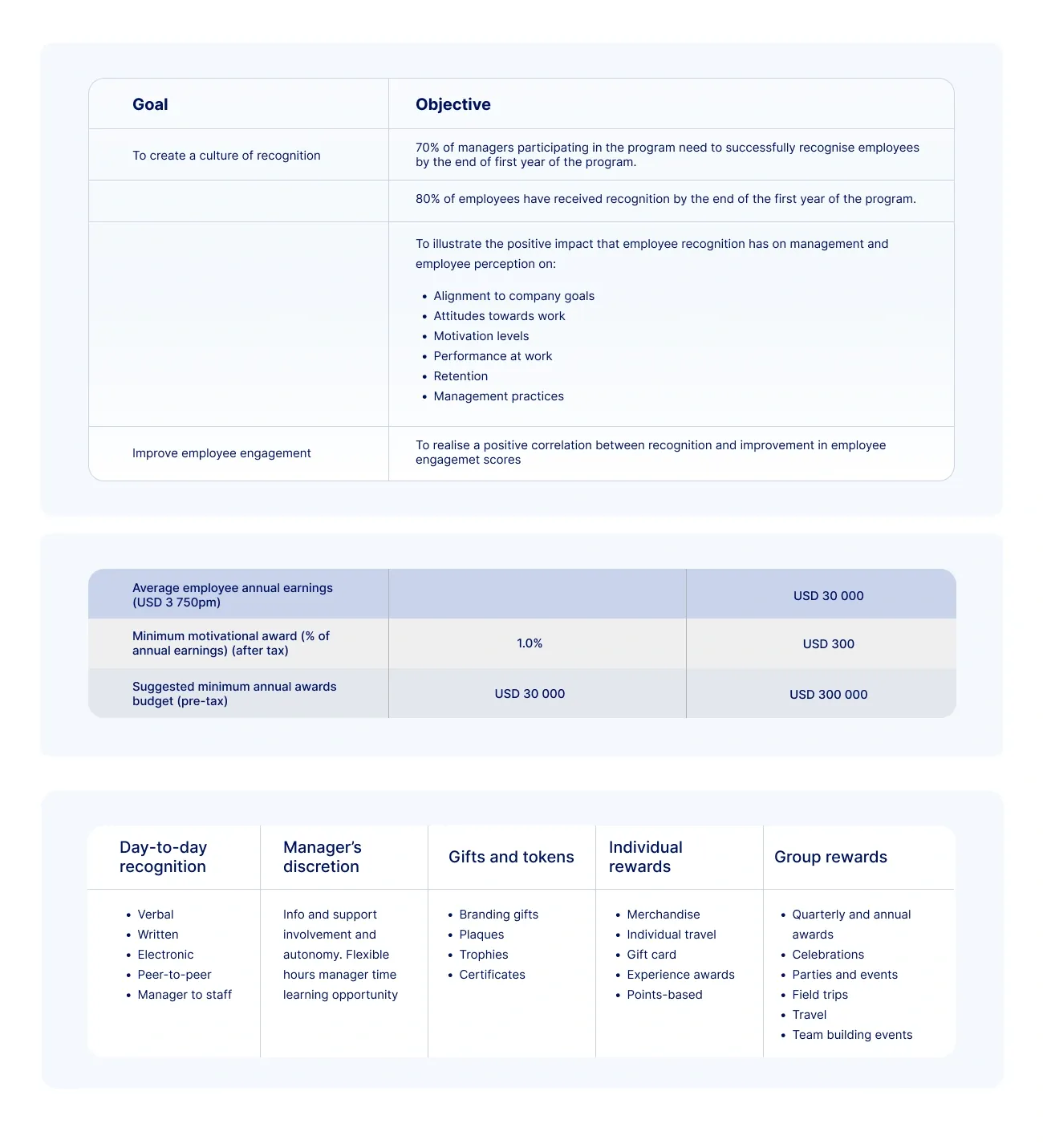
Empuls offers built-in reporting and analytics to track participation, reward redemptions, and engagement trends so you can measure success objectively.
3. Define and profile your program participants
The “who” of the program needs to be determined quite early: Who needs to be rewarded and who is eligible for it. In a nutshell, it’s a separation of chaff from grains. It can be distilled out through thorough investigation by using the following questions -
- Who must participate in the program to achieve your strategic goals? It generally varies according to your goals.
- Are you planning it as an enterprise-wide program, or is it intended for a specific department within your business?
- Should some employees be excluded? For example, should suspended employees, employees on notice period, or employees undergoing disciplinary action or freelancers be included or excluded?
- Are there any restrictions on who can earn tangible rewards? Some companies exclude certain levels of management from specific rewards.
- When the gig economy is at an all-time high, it is vital to decide if non-permanent employees should be rewarded or not.
Platforms like Empuls allow you to set clear eligibility criteria and reward rules, simplifying participant profiling.
4. Fix your program period
As I have mentioned earlier as well, rewarding is a lifelong process, and it takes time to take root in your organization. Research suggests that it takes 3 years for any rewards initiative to become a key facilitator of the change you wish to see. That’s where your program needs to be flexible enough to adapt to the changing needs of time and rewards trends.
5. Determine the budget
Since it can make or break not just the success of a program but the economic backbone of the whole organization, it must be done judiciously. The trouble is that different companies have different monetary muscles, ruling out the one-size approach. However, certain standards must be followed when finalizing the budget.
- Average is 2% of payroll
- The median budget is 1%
- The mode (most common response) is also 1%
We recommend between 1% and 2% of payroll if extrinsic rewards are to be included. However, suppose intrinsic rewards or competition-rewarding methods are implemented (a limited number of winners versus everyone has an opportunity to be rewarded). In that case, the budget can be curtailed to 0.75% of payroll.
It must be understood that rewards programs take a while to become fully integrated into a company, and the budget uptake can take a few years. That’s why subsequent years’ budgets shouldn’t be entirely based on the previous year's actuals, as the uptake should increase each year.
Deciding on your investment in an employee rewards program is variable because every company’s needs are different. To illustrate how companies could approach budgeting, it would be on the following line:
It’s one of the primary reasons why U.S. companies utilize non-monetary rewards to supplement their employee rewards programs. The 2018 IRF Outlook study also showed that 43% of respondents invest an estimated USD 250 per employee.
That’s why to keep the culture of rewards uncompromised throughout the year, you can think about the right admixture of intrinsic and extrinsic rewards.
Empuls' extensive rewards marketplace offers flexible options ranging from low-cost perks to luxury experiences, giving you budget control without compromising reward quality.
6. Give your employees a voice
If rewards are not engaging and have no resonance with employees, rewards programs will never get off the ground.
That’s why you should never shrug off conducting surveys to know which rewards rank high in the wishlist of your employees.
Platforms like Empuls make it easy to gather feedback on reward preferences and tailor catalogs accordingly.

Note that giving employees a say in rewards redemption increases their interest in the program and makes rewards even more enjoyable and satisfying.
Gift cards can come very handy in this regard, as they give employees the freedom to choose what they want and when they want.
7. Visualize your employee rewards program effectively
If it’s out of sight, it’s out of mind. Remember this principle and leave no stone unturned in ensuring that employees across all the files and ranks are well aware of your rewards program. The key to it is effective communication across all preferred communication channels.
It is essential to recognize that there are different types of workforces, each with its own preferred methods of communication. For example, manufacturing plant employees may find specialized kiosks as the best tool to get key updates, while administrative staff might prefer email.
Empuls promotes social intranet-style feeds and in-app communication, helping ensure visibility across departments and locations.
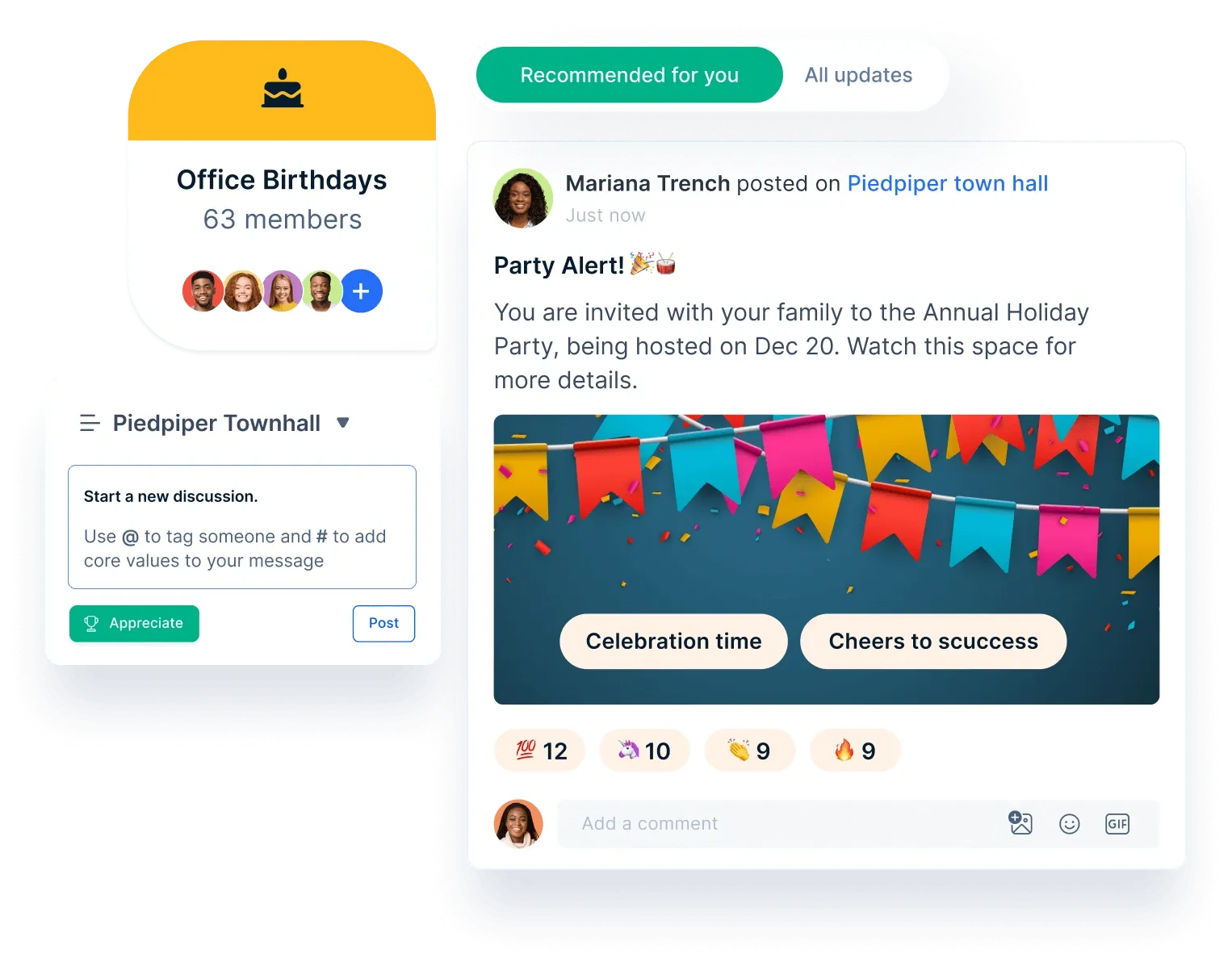
8. Measure the effectiveness of your employee rewards program
A well-executed rewards program is a multi-pronged enabler that positively impacts performance, productivity, and turnover. You can scrutinize it through survey tools, feedback sessions, and performance management software and see how close or far you are from the desired objectives of your program’s goals.
However, you can effectively utilize the gathered data by applying it to other business decisions. You can find out which teams are in silos, which employees need a booster of motivation, and what is the reason behind the non-participation of certain employees.
Empuls' analytics dashboard offers real-time insights into engagement, redemption trends, and participation metrics, enabling continuous improvement.
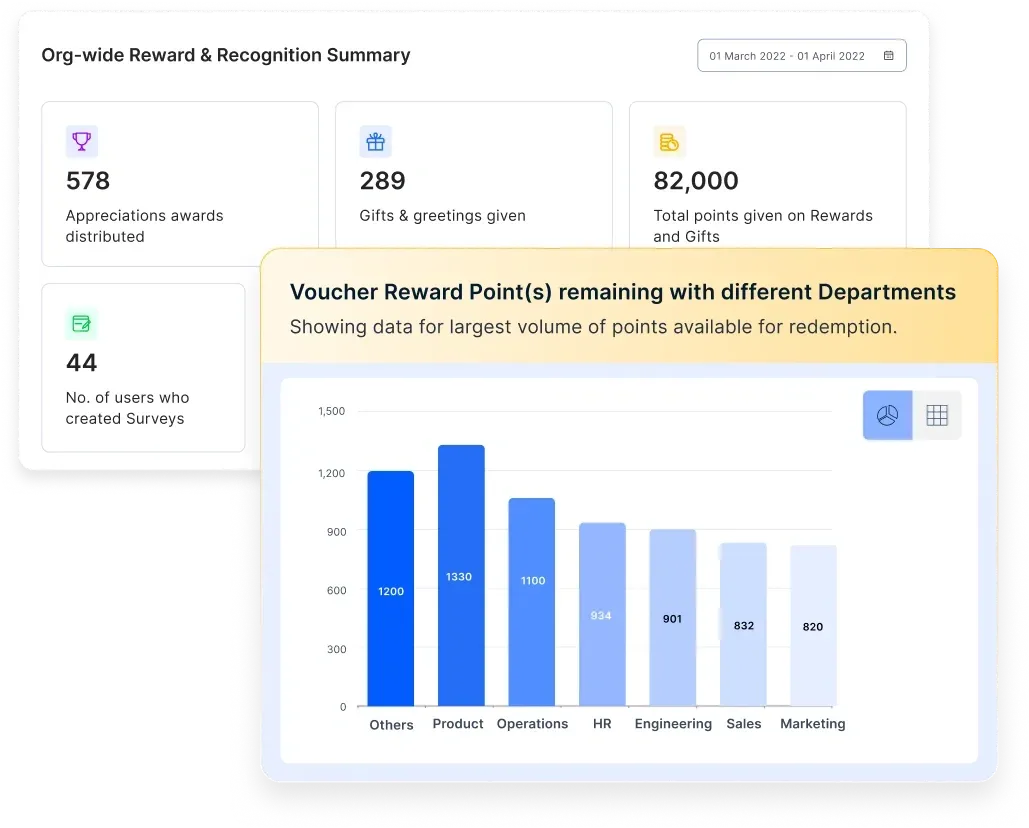
This holistic approach towards the rewards program will help you build a more cohesive and inspired workforce, the lifeblood of any organization.
9. Review and revive regularly
Nothing is perfect, and your rewards program is no exception to this axiomatic truth. Regardless of the research you put in and bring it to life through meticulous planning, a rewards program cannot satisfy all employees.
A few will crib for the non-exciting rewards, while others may complain about the reward criteria. What you can do is continue with a program that is desirable for the majority of the employees.
That’s where taking regular feedback from employees will help you determine what value your rewards program holds in their eyes. Leadership feedback will inform you whether the program is positively impacting job performance and business outcomes as planned.
Platforms like Empuls make it simple to collect feedback regularly and adjust your program to stay relevant, engaging, and valuable over time.

Once you are equipped with these insights, you can make amendments whenever they are desirable and possible.
This phase is highly critical for the long-term success of your rewards program, especially when it dawns upon you that each organization is different and rewards programs must be tailored to suit that difference.
Empuls helps you build a culture where recognition feels easy, timely, and meaningful. Create personalized reward experiences, automate processes, and track success—all from one platform.
Book a free demo today and see how simple employee rewards can be!
Fascinating employee rewards program examples
Here are a few examples of the most fascinating and scintillating rewards programs:
1. Zappos
Zappos, a multinational e-commerce chain, is known for its stronger value-based work ethics, and its reward program is no exception to it. In sync with the company’s motto of “doing more with less,” its employee reward approach is based on a peer-to-peer format, where employees share low-cost, high-frequency rewards with each other.
It rewards employees with “Zappos Dollars” for participating in training, whether as learners or volunteers. Employees can redeem these dollars in the office via branded vending machines or donate them to a Zappos partner charity.
However, what makes it a uniquely eye-grabbing is it is tailor-made according to the needs of the office location. At the company’s Las Vegas premises, owning a parking spot in the busy morning hours can be a real challenge. Once a week, employees are allowed to nominate a colleague for a special parking spot that is considered a “reward.”
2. Apple
There is a reason why Indeed named Apple the best private-sector employer in the U.K, and LinkedIn ranked it the sixth-best company to work for in the U.S. The crux of it was formed by its thoughtful, humane, and creative employees' rewards and recognition programs.
One example is the holiday season. Apple surprised its employees with an extended holiday so that the entire workforce could take a week’s break. Instead of just one day off on Thanksgiving, Apple decided to offer paid holidays for three days in a row.
However, Apple converted this seemingly simple perk into rewards by customizing it according to an employee’s location and job role. Employees sweating out in different parts of the world would get paid time off during an equivalent holiday. Retail workers who put in extra efforts during the holiday season would get a similar reward at an alternate time.
3. Hewlett-Packard
The IT giant, commonly known by its abbreviation HP, is known for rewarding employees and partners with cutting-edge and creative ways, and Project Everest is a prime example of it. In this gamified rewards system, product resellers get represented by an avatar climbing a mountain.
Every time a salesperson flags a scintillating sales achievement, the avatar moves up the mountain. The best performers were able to win televisions and tablets as they progressed up the mountain. The grand prize was the vacation of a lifetime.
It was a runaway success in two of the most essential criteria of any reward program: participation and the ultimate revenue lift.
With over 80% of all Hewlett-Packard resellers participating in the project and sales revenue increased 56.4%, it quelled all the doubts about the efficiency of the reward system, especially in its advanced gamified form, to lit the sales funnel unprecedentedly.
4. DirecTV
Rewards don’t always have to be a celebration of success. They can be used effectively to learn from failures and avoid the trigger points that lead to those failures. DirecTV’s F12 is a prime example of what to avoid in this category.
After the IT project's second failure in 12 months, DirecTV decided to redefine the concept of failure by creating a gamified learning platform that allows the IT department to create and view their videos about failure.
Named "F-12" to indicate the company's 12-step "program to overcome failure,” it allowed employees to access the learning platform and complete assignments to view or create videos, take quizzes, and share or comment on videos.
The program ensured that employees would earn points and badges for this active participation. Top performers for each quarter earned prizes like iPads and iPods.
Since the idea of F-12 was to make employees embrace failure rather than feel embarrassed by it, it didn’t just alter their mindset about the dreaded word called failure. It made them more proactive and mentally tough enough to ride over past mistakes.
And that got reflected in numbers: User activity on the platform tripled, employees created more than 100 videos, and IT saw a 30% decrease in problems with IT rollouts. In addition, IT successfully launched its first defect-free enterprise project.
5. Scopely
This video game company handsomely rewards their maverick performers on achievements with trophies, a shout-out on social networks, and a bonus. But they soon realized the importance of converting this one-off act of rewarding into a company culture by keeping it alive throughout the year.
The truth is, to keep the wheels of a company in motion, you want your toppers to repeat the same performance in the next year as well.
It explains why they go a step beyond - particularly to reward an employee at his work anniversary. The company immortalizes employees in an oil painting. Other gifts include custom-made samurai swords.
It's a tactical smartness because it gives employees a personal reward they will never forget and does it at the time when people are statistically most likely to switch jobs: their first work anniversary.
6. Propellernet
Propellernet’s dream balls have been a talk of the town for too long a time, and it rightly deserve that kind of sustained attention. It unerringly achieves the very soul and heart of any employee reward program: a deeper satisfaction for employees.
Every employee adds a ‘dream ball’ (indicating a dream) into the company’s Dream Machine. When Propellernet nets some scintillating achievement, which it believes is due to its able employees, a ball gets removed, and Propellernet delights an employee by making his dream a reality. Till now, they’ve granted a wish for an epic trek through Africa and staged a sci-fi rock opera.
With 5% of profits put into the ‘fun fund’ for other dream activities like pub trips and wellness activities like meditation sessions, it’s hardly a surprise the company has been voted as one of the UK’s Best Workplaces.
7. Amazon
Amazon, the e-commerce monolith, has recognized the need for non-monetary rewards to turbocharge employee efficiency and thus, productivity. With its reward program, FC Games turned warehouse tasks into arcade-style video games.
The goal is to reward employees for things like speed, crucial to delivery-focused organizations like Amazon. Those “gaming” performances or additional hours are translated into Amazon’s proprietary currency, which employees can redeem for items like T-shirts and water bottles.
During the holiday rush, Amazon offers a wide range of big-ticket items, including gaming consoles and smartwatches. Considering the great response it got, Amazon is now expanding the program to facilities across 20 states.
8. MARS
By going beyond paid time off to volunteer and paternity leave, on top of a hefty 401k matching plan, the ideologues of MARS are leaving no stone unturned in showing how much they care for the holistic well-being of their employees.
Believing strongly in keeping their associates “motivated, productive, happy and healthy isn’t just important—it’s essential,” they are rewarding their employees with wellness through stress management, nutrition, physical activity, tobacco cessation, weight management, and on-site medical care.
With wellness and health as the mainstay of their rewards system, it is no surprise that MARS was awarded its first-ever gold “Workplace Wellness Award” by the Workplace Councils of America.
Of course, the citations as mentioned earlier are the tip of the iceberg, as the business world is brimming with countless rewards programs that have truly become guiding lights, only to prove that running a successful reward program isn't rocket science.
Like all the essential things in life, they have to be mothered carefully and have to pass through unavoidable mental and practical processes, like:
- ✅ Debunking the myths around reward programs
- ✅ Setting the ideological and functional backbone of the programs
- ✅ Implementing them with utmost precision
How Empuls helps build a rewarding employee experience
Designing an employee rewards program that feels personal, meaningful, and effortless can be challenging—especially when organizations are growing, remote, or managing diverse teams. This is where Empuls brings real value.
Empuls simplifies the process of rewarding employees by offering a seamless, fully customizable platform that fits naturally into everyday work life. It ensures that recognition and rewards are timely, thoughtful, and accessible to everyone across the organization.
Here’s how Empuls supports a successful employee rewards program:
✅ Wide Rewards Marketplace
Empuls offers a global catalog of digital gift cards, merchandise, experiences, and wellness benefits, giving employees the flexibility to choose rewards that resonate with them personally.

✅Easy-to-use platform
Whether rewarding peers, direct reports, or celebrating team milestones, Empuls makes it easy to send rewards with just a few clicks—no complex workflows, no delays.
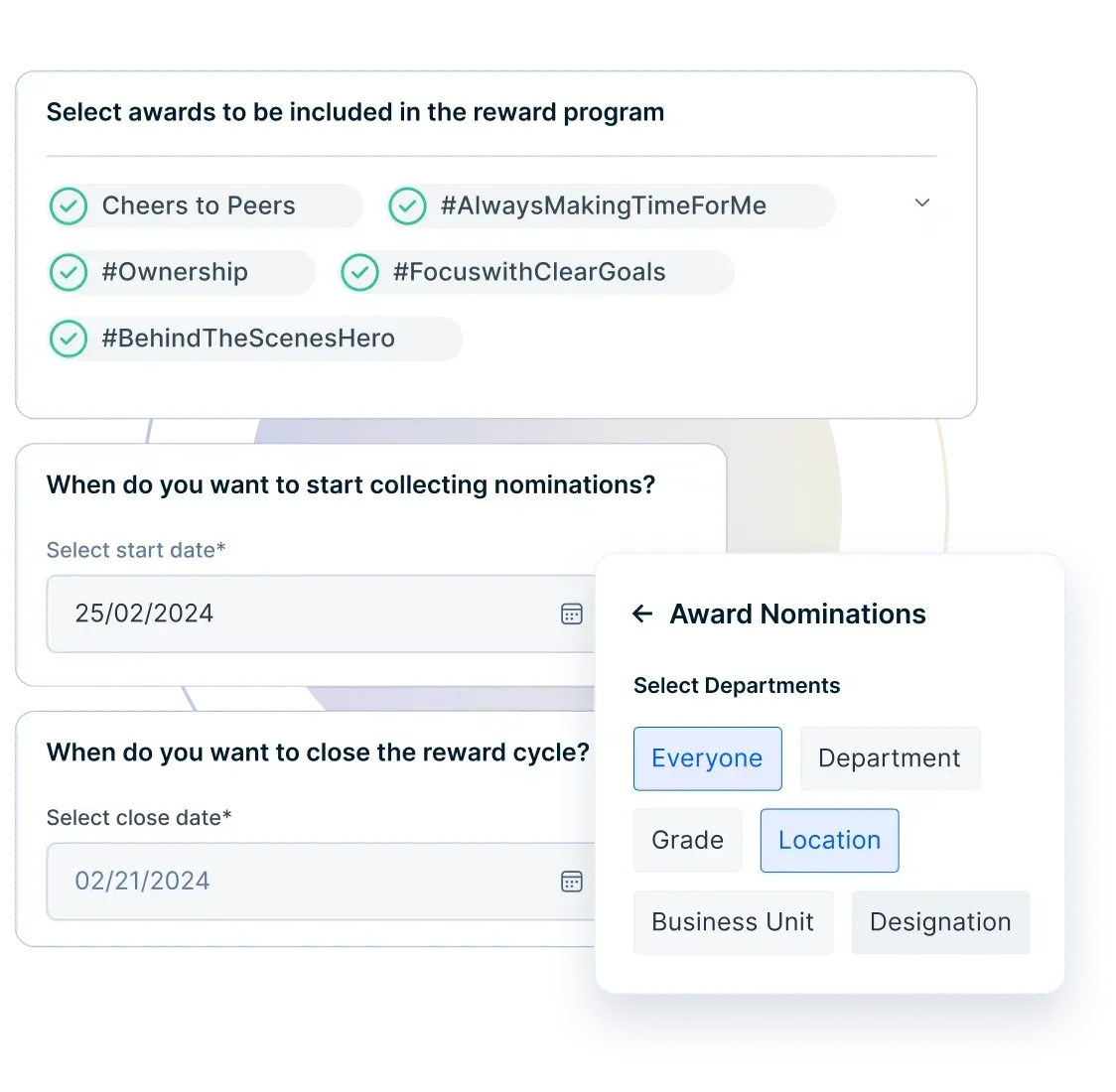
✅ Peer-to-peer and manager rewards
Empuls empowers both managers and peers to recognize achievements, encouraging a culture of appreciation at all levels.
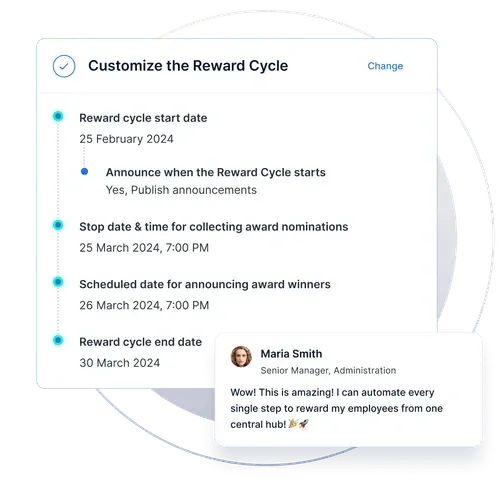
✅Integration with everyday tools
Empuls integrates effortlessly with Slack, Microsoft Teams, and HRMS systems, so recognition and rewarding become part of the daily workflow, not an isolated event.
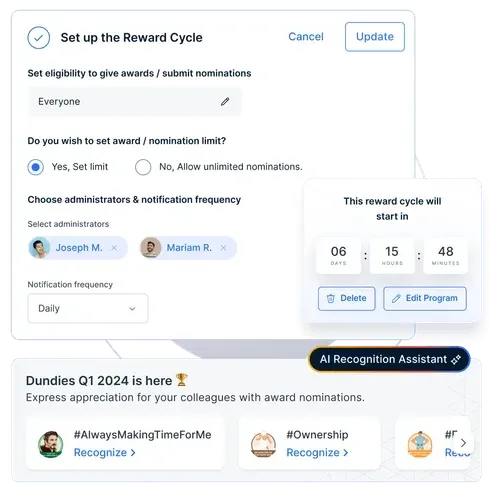
✅Data-driven insights
Built-in reporting tools help organizations track engagement, reward redemption trends, and program effectiveness, enabling continuous improvement based on real feedback.
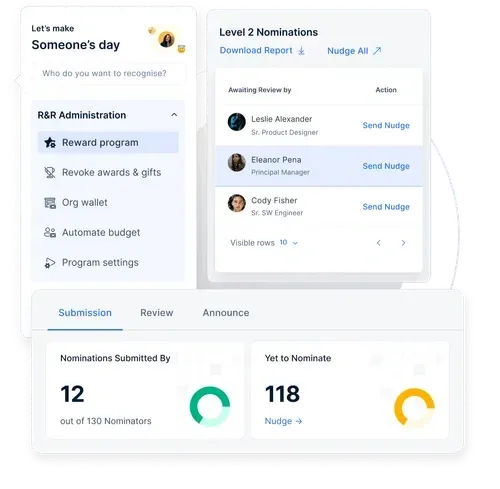
Empuls isn’t just a tool—it’s a way to weave continuous appreciation into the fabric of your company culture, ensuring that employees feel valued, motivated, and connected no matter where they work.
Conclusion
An employee rewards program is not just an add-on to your HR strategy—it’s the foundation for building a workplace where motivation, loyalty, and performance thrive.
When employees feel genuinely recognized and rewarded for their efforts, they bring more passion to their work, contribute more freely, and stay longer with the organization.
Designing a meaningful program requires thoughtful planning: breaking myths, setting the right goals, personalizing the experience, and keeping the system simple, timely, and transparent. It’s about more than incentives—it’s about shaping a culture where appreciation becomes second nature.
The most successful companies don’t treat rewards as a transaction. They treat them as a reflection of the trust, respect, and investment they place in their people.
If approached with sincerity and structure, a rewards program can unlock the best in every employee—and drive real, measurable growth for the organization.


















